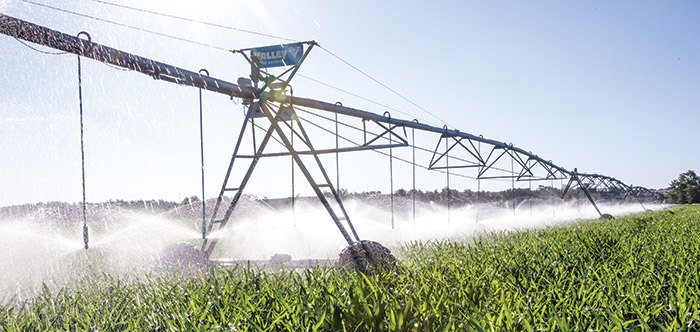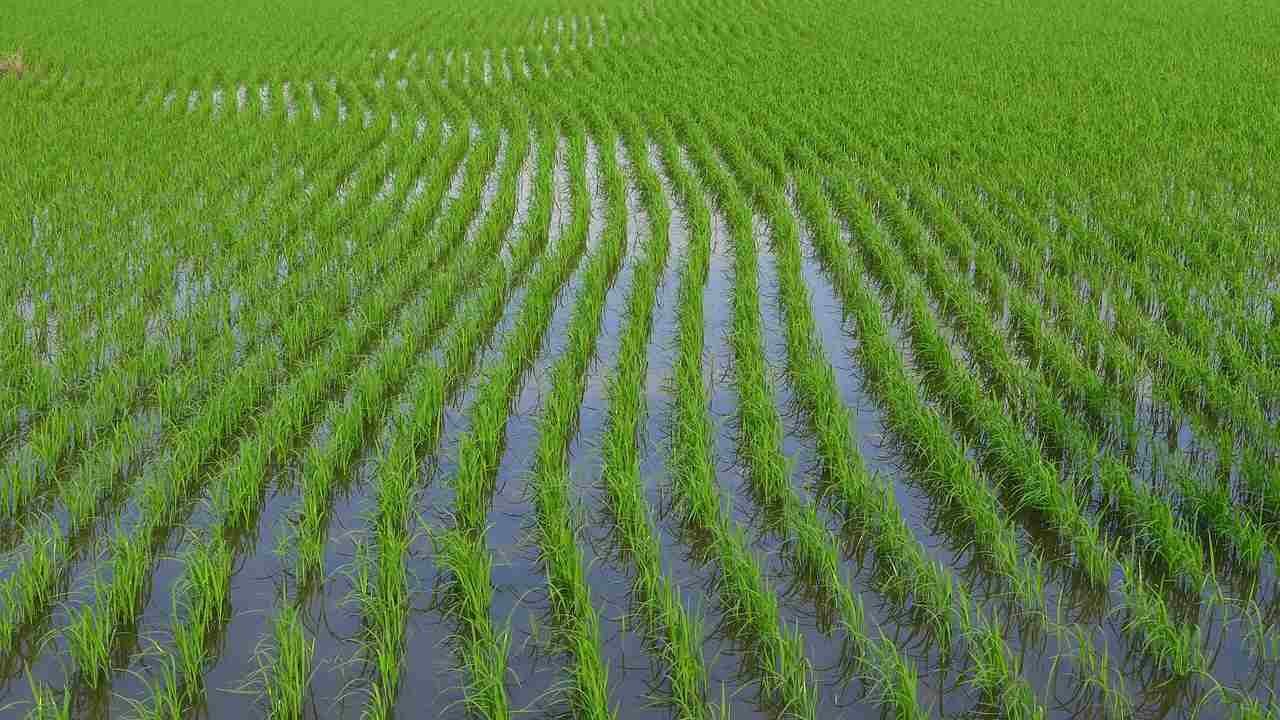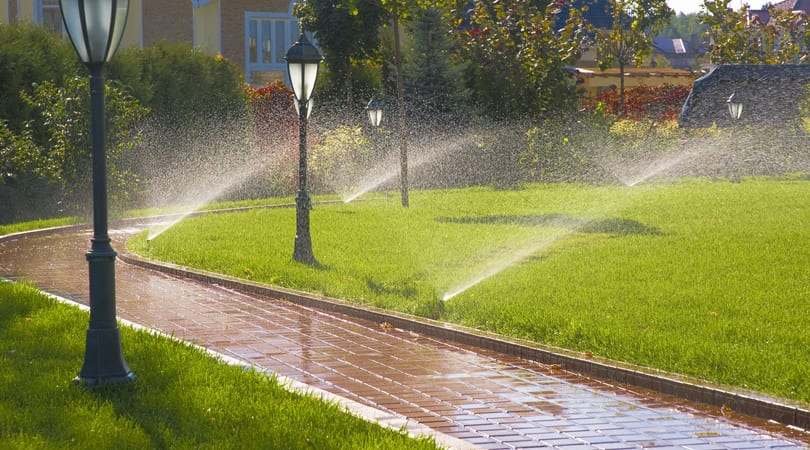When it comes to watering your garden or lawn in Sparks, NV, choosing the right irrigation system can make a huge difference in efficiency and water conservation. There are a few common options, including drip systems, sprinklers, and soaker hoses, each suited to different needs. Drip systems are perfect for gardens and flower beds, delivering water directly to the roots. Sprinklers cover larger areas, while soaker hoses provide slow, consistent watering along garden rows. Whether you’re looking to install or upgrade your irrigation system, Hoskins Landscaping Contractors LLC is here to help you make the best choice for your home and landscape.
1. Sprinkler Systems

Sprinkler systems are a popular irrigation method that uses a network of pipes, valves, and sprinkler heads to distribute water across lawns, gardens, and landscapes. These systems can be customized to ensure even coverage and efficient water use. Irrigation work services for sprinkler systems include design, installation, maintenance, and repair, ensuring optimal functionality. Professionals assess water pressure, coverage area, and system components to enhance performance and conserve water. Properly maintained sprinkler systems can improve landscape health and reduce water waste.
Sprinkler systems are one of the most common irrigation methods for lawns and large garden areas. They work by spraying water through a network of pipes and nozzles, creating a rainfall effect over the area. Sprinkler systems are highly effective for lawns, flower beds, and shrubs that require a broad water coverage.
Types of Sprinkler Systems:
Pop-up Sprinklers: These sprinklers are installed below ground and pop up when activated. They are discreet and ideal for lawns, providing even water coverage without interfering with the appearance of the yard. Pop-up sprinklers are best used on flat or gently sloped lawns.
Rotor Sprinklers: Rotor sprinklers rotate to distribute water in a circular motion, covering larger areas. They are adjustable, allowing you to change the spray radius and water flow to match your landscape’s needs. Rotor sprinklers are ideal for large lawns and commercial landscapes.
Benefits of Sprinkler Systems:
Efficient Coverage: Sprinklers can cover a large area, making them suitable for big lawns or garden beds.
Customizable: You can adjust the spray radius and water pressure to fit different parts of your yard.
2. Drip Irrigation Systems
Drip irrigation is one of the most efficient and water-conserving irrigation methods. It works by delivering water directly to the base of plants through a network of tubes, emitters, and hoses. The water slowly drips out in a controlled manner, preventing waste and ensuring that plants get just the right amount of moisture.
Drip irrigation is ideal for garden beds, shrubs, trees, and vegetable gardens, especially in areas with limited water resources. It is a great option for Sparks, NV, where maintaining a healthy landscape while minimizing water use is crucial.
Components of Drip Irrigation:
Mainline and Sub-mainline Tubing: These carry water from the source to the emitters.
Emitters: These are small devices attached to the tubing that control the flow of water to each plant.
Drip Lines: These flexible tubes run along the rows of plants and supply water evenly to the roots.
Filters: These prevent debris from clogging the system, ensuring a steady flow of water.
Benefits of Drip Irrigation:
Water Efficiency: Drip irrigation delivers water directly to the plant roots, reducing evaporation and runoff. This is especially important in Sparks, NV, where water conservation is key.
Prevents Overwatering: Since water is applied in small amounts over a long period, drip irrigation prevents overwatering and helps maintain healthy plant roots..
3. Soaker Hoses
Soaker hoses are a type of irrigation system that slowly releases water along their length, providing deep, efficient watering directly to the soil. They are ideal for flower beds, vegetable gardens, and trees, reducing water runoff and evaporation. Landscaping services related to soaker hoses include design, installation, and maintenance, ensuring proper placement for even water distribution. Professionals help integrate soaker hoses into your landscape, optimizing water use and promoting healthier plants, while offering ongoing care for system efficiency and durability.
Soaker hoses are another water-efficient irrigation option. These porous hoses allow water to seep out slowly along their length, providing a consistent moisture level to plants. They are often laid out in garden beds, flower beds, or along the base of trees and shrubs.
Soaker hoses work best in small to medium-sized garden beds or rows, as they don’t cover large areas as efficiently as sprinklers or drip systems. However, they are an excellent choice for gardeners looking for a low-maintenance and cost-effective option.
How Soaker Hoses Work:
Soaker hoses are made of a rubber or plastic material with small pores that allow water to leak out at a slow, consistent rate. They are typically connected to a water source via a faucet or spigot and can be laid out in rows to water plants evenly.
Benefits of Soaker Hoses:
Water Conservation: Like drip irrigation, soaker hoses minimize water loss by delivering moisture directly to the plant roots. They are great for drought-prone areas like Sparks, NV.
Even Coverage: Soaker hoses provide uniform water distribution, which reduces the risk of overwatering or underwatering specific plants.
Affordable and Easy to Install: Soaker hoses are a budget-friendly option, and they are relatively simple to set up.
While soaker hoses are effective for certain applications, they can be less durable than other systems and may require occasional replacement. They are also not as customizable as drip irrigation systems in terms of water flow and pressure.
4. Surface or Flood Irrigation

Surface or flood irrigation is one of the oldest methods of watering crops and gardens. It involves flooding the soil with water, allowing it to seep into the ground and irrigate plants. While this method is not as common in residential settings, it can still be found in larger properties or agricultural settings.
In flood irrigation, water is typically released from a main source and allowed to flow over the surface of the soil. The water spreads across the land, wetting the roots of plants.
Benefits of Surface Irrigation:
Low Initial Cost: Surface irrigation systems tend to have a lower initial installation cost compared to other systems.
Effective for Large Areas: This method can be useful for large lawns or fields with even terrain.
However, surface irrigation tends to be inefficient in areas where water is scarce or expensive. It can lead to water runoff, soil erosion, and uneven distribution. As a result, it is not ideal for residential landscaping in Sparks, NV, where water conservation is a priority.
5. Smart Irrigation Systems
Smart irrigation systems use advanced technology, such as weather sensors, soil moisture monitors, and automated timers, to optimize watering schedules based on real-time conditions. These systems help conserve water and promote healthy landscapes by adjusting irrigation based on plant needs. Hardscaping services related to smart irrigation include the design and installation of features like patios, walkways, and retaining walls, while integrating efficient irrigation solutions. Professionals ensure seamless incorporation of smart irrigation systems into hardscaped areas, enhancing both aesthetics and functionality.
Smart irrigation systems are the future of water-efficient landscaping. These systems use weather data and soil moisture sensors to adjust watering schedules automatically. With a smart irrigation system, your sprinklers or drip system can receive real-time updates about local weather conditions, ensuring that they only operate when needed.
Smart controllers can be connected to smartphones or computers, giving homeowners full control over their irrigation system. Many modern systems allow you to adjust settings remotely and monitor water usage, which helps conserve water and reduce utility bills.
Benefits of Smart Irrigation:
Water Efficiency: Smart irrigation systems can save up to 50% of water compared to traditional systems by adjusting watering based on weather conditions and soil moisture.
Remote Control: With an app or web interface, you can control your irrigation system from anywhere, ensuring your landscape stays healthy with minimal effort.
6. Selecting the Right Irrigation System
When choosing an irrigation system for your home in Sparks, NV, it’s important to consider the size of your property, the types of plants you have, and your water usage goals. Each system has its advantages and is suited to specific needs:
Sprinkler systems are best for large lawns and grassy areas.
Drip irrigation is ideal for gardens, shrubs, and trees, providing targeted watering.
Soaker hoses are great for smaller gardens or flower beds, providing consistent moisture.
Smart irrigation is perfect for tech-minded homeowners looking to optimize water use and save money.
FAQs
What is the most common irrigation system?
The most common irrigation system for residential lawns is the sprinkler system, particularly pop-up sprinklers, which are ideal for large, flat areas. Sprinklers provide even coverage and are easy to install and maintain. They are versatile, efficient for lawns, and customizable to suit different landscape needs.
What are the types of irrigation systems?
There are several types of irrigation systems, including sprinkler systems, which spray water over a wide area, and drip irrigation, which delivers water directly to plant roots through tubing and emitters. Soaker hoses provide a slow, consistent water release along their length, ideal for garden beds. Additionally, surface or flood irrigation involves spreading water over the soil, while smart irrigation systems use weather data and sensors to adjust watering schedules automatically.
What is a residential irrigation system?
A residential irrigation system is a setup designed to deliver water to plants, lawns, or gardens in a controlled manner. It typically includes components like sprinklers, drip lines, and timers to ensure efficient water distribution. These systems help maintain healthy landscapes while conserving water and reducing the need for manual watering.
What is the most modern irrigation system?
The most modern irrigation system is the smart irrigation system, which uses weather data, soil moisture sensors, and automated controls to adjust watering schedules in real-time. These systems can be monitored and controlled remotely through smartphone apps, optimizing water usage based on current conditions. Smart irrigation minimizes water waste, improves plant health, and can significantly reduce water bills.
What are the 3 most common modern irrigation methods?
The three most common modern irrigation methods are drip irrigation, sprinkler irrigation, and smart irrigation. Drip irrigation delivers water directly to the root zone of plants through a network of tubes and emitters, reducing water waste. Sprinkler irrigation mimics rainfall by spraying water across the landscape, and smart irrigation systems use technology like sensors and weather data to optimize water usage automatically.
Conclusion
Watering your landscape efficiently is key to maintaining a beautiful yard while conserving water in Sparks, NV. Whether you choose a sprinkler system, drip irrigation, or a smart system, each option offers distinct advantages. By choosing the right irrigation system for your home, you can keep your landscape healthy, save water, and enjoy the beauty of your outdoor space.
If you need help with designing and installing an irrigation system tailored to your needs, Hoskins Landscaping Contractors LLC is ready to assist you. Their team of experts can ensure that your system is optimized for efficiency and longevity, giving you peace of mind and a thriving landscape for years to come.
